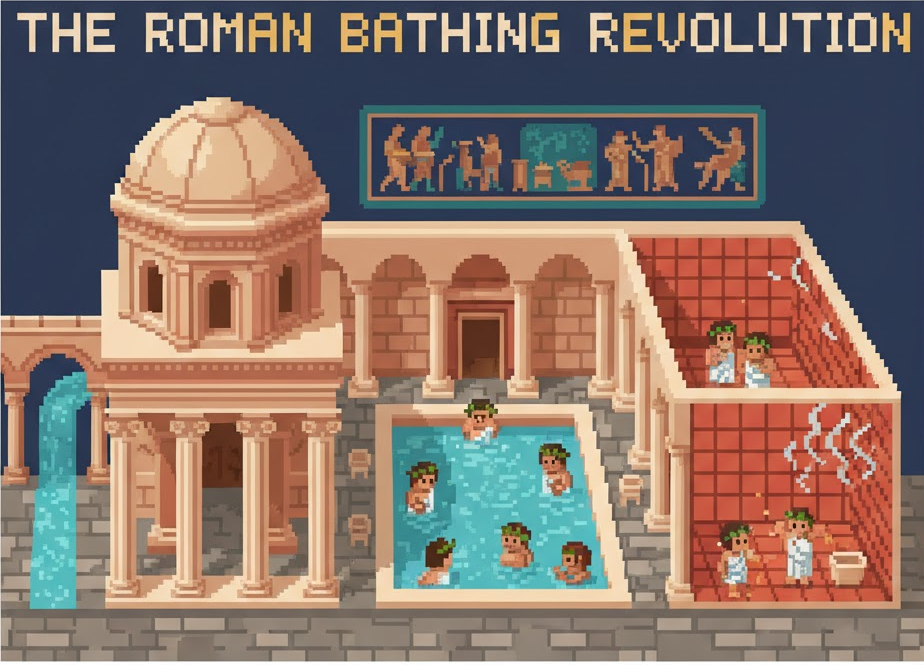
I. The Western Paradigm and Architectural Dominance
The Greek and Roman civilizations established the Western paradigm for bathing, transforming the practice from a functional activity associated with athletic training into a comprehensive social and architectural phenomenon rooted in preventative health philosophy.
A. The Roman Revolution: Thermae as the Engine of Romanitas
The Romans radically monumentalized the Greek tradition with state-owned, colossal multi-purpose complexes known as thermae. These structures, epitomizing luxurious experience, could accommodate thousands of bathers and became potent symbols of Romanitas (Roman identity). This scale was possible only through vast aqueduct systems, which prioritized the water supply for public baths, demonstrating the state's valuation of public health and social cohesion over private convenience.
- Architectural Zenith: A Roman catalogue from 354 AD documented 952 baths in the city of Rome alone.
- Social Access and Democratization: Fees were kept at the lowest coin denomination, making daily bathing accessible even to the poorest free Roman male. The baths served as powerful venues for recreation and political networking across social classes.
The fundamental difference was the state’s massive subsidy, transforming bathing into a subsidized, universal social entitlement that solidified imperial control and cultural assimilation throughout the provinces.
II. Medical Philosophy and Health Integration
A. Galenic Integration: Bathing as a Res Non Naturalis
Romans formalized the health regimen under physicians like Galen of Pergamon. Galen established six controllable factors, the res non naturales, which influenced humoral balance, with bathing regarded as a crucial component. The medical profession fully supported bathing as a vital therapeutic and preventative measure.
B. Regimen and Therapy: The Structured Bathing Sequence
The Roman thermae architecture directly manifested this medical theory. The structured visit—involving exercise, oiling/massage, heating/sweating (tepidarium, caldarium), and final cooling (frigidarium)—was a carefully calibrated physiological process designed to maintain humoral equilibrium. The state-sponsored thermal complex functioned essentially as a large-scale, subsidized public health clinic.
The Roman Thermae: A Social Revolution
More Than Water
Social & Political Hub
Baths were the primary location for social interaction, equivalent to modern-day cafes, gyms, and community centers combined. Politicians campaigned, merchants made deals, and friends gathered daily.
Health & Wellness
Following Galenic medicine, bathing was a key part of the *Res Non Naturales* (six non-naturals)—a regimen for maintaining health. The bath's sequence was designed to balance the body's humors.
Imperial Propaganda
Emperors built massive, opulent thermae as a gift to the people. This "bread and circuses" policy demonstrated imperial generosity and power, securing public favor.
The Bathing Process: An Interactive Journey
Click on each step of the Roman bathing ritual to learn about its function.
Select a room to see its description.
The Engine of the Baths: The Hypocaust
This entire system was powered by a brilliant piece of engineering: the hypocaust. This was a sophisticated under-floor central heating system that used hot air from a furnace to heat the floors and walls of the baths, particularly the Tepidarium and Caldarium.